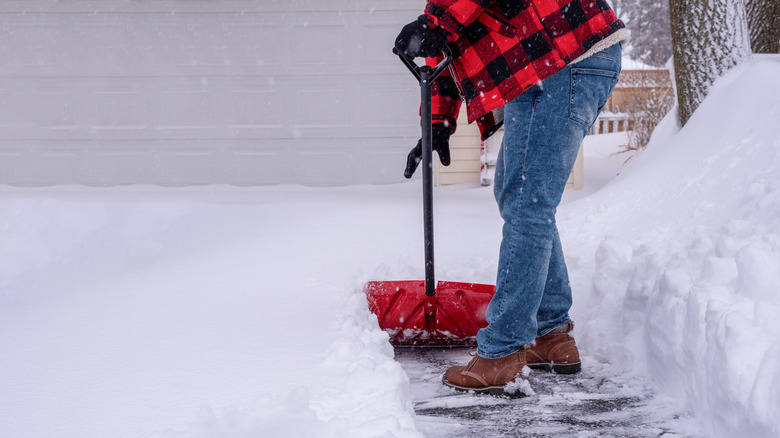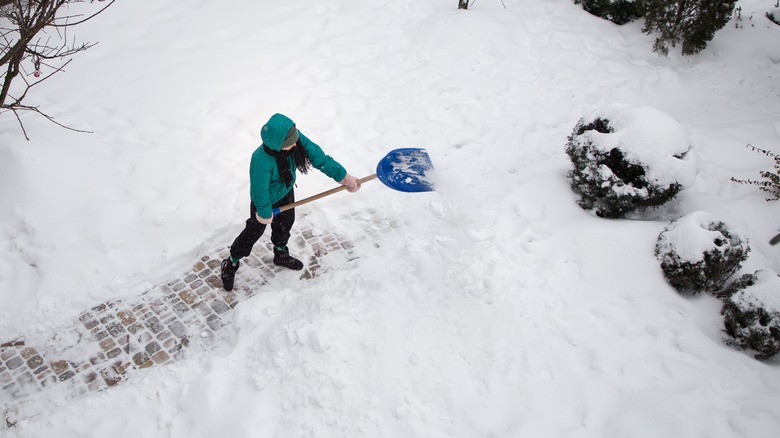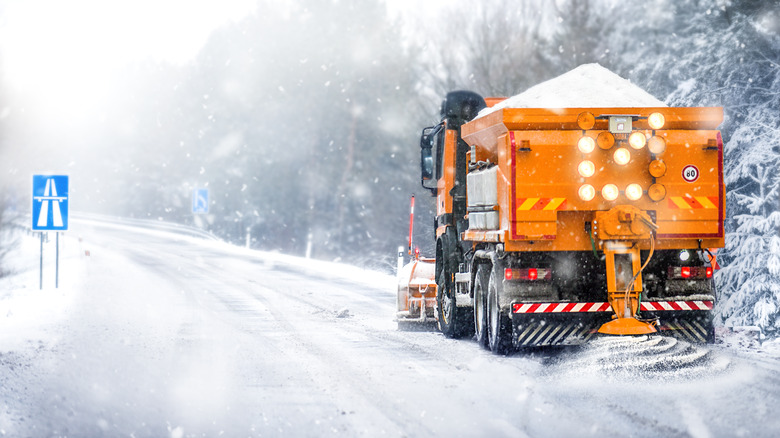The Best Time To Start Shoveling Snow Might Not Be When You Think
In winter, nothing is more beautiful than stepping outside into a world that is surrounded by the serene quiet of newly fallen snow — that is unless you're the one who has to shovel it. If you've ever lived in an area where it snows every winter, you probably already know that shoveling is backbreaking and time-consuming work that is (unfortunately) necessary to make your driveway safe for both people and vehicles. However, you may not know that the time you choose to start shoveling can make a big difference in how strenuous the task will be.
The best time to start shoveling is while the snow is still falling and then again after it is done. This is especially important if snow is forecasted to fall over a long period because this method allows you to split up the work into smaller chunks. Shoveling after every two to four inches of snow is recommended to make the task manageable and safe. This is because it is much easier to shovel two inches of newly fallen fluffy snow a couple of times than it is to shovel six inches of heavy and compacted snow in one go.
How to safely shovel snow
It may come as a surprise, but the act of shoveling snow sends an average of over 11,000 people to the emergency room each year for many different reasons, from back injuries to falls and cardiac arrest. As Barry Franklin, the director of preventative cardiology and cardiac rehabilitation at William Beaumont Health, said in an interview with USA Today, shoveling increases the risk of heart attack because it causes higher blood pressure in cold weather, which decreases oxygen levels and puts more strain on the heart.
So, what can you do to stay safe while shoveling? First, you should make sure to know the signs of a heart attack and stop if you feel anything strange or unusual. It is also important to take breaks every 10 to 15 minutes to stretch, drink water, and allow your heart rate to slow. Furthermore, you should avoid eating large meals or drinking alcohol both before and after shoveling.
As far as shoveling methods are concerned, you should focus on trying to lift as little as possible and simply push most of the snow off your driveway. If you have to lift and throw a shovel full of snow, make sure to lift with your knees and avoid twisting from your back or throwing the snow over your shoulder.
How to prevent being blocked in by a snowplow
While snow is naturally heavier or lighter depending on the weather conditions and temperature, the heaviest snow you'll ever shovel is the stuff that is pushed into your almost cleared driveway by a municipal snowplow. This is because the snow that is being pushed by the plow has not only been compacted by cars driving over it but also by the plow itself, making it very heavy and difficult to move. Because lifting heavy snow is not fun or recommended, this situation is best avoided — but how?
According to the Pennsylvania Department of Transportation, you can avoid this dilemma by shoveling out the curb area to the left of your driveway (if you are standing in your driveway and looking at the street). Because snowplows push snow off of the street and to the right of their vehicle, this will allow the snow to be deposited into the area you cleared instead of in front of your drive. While this adds a bit of work to the front end of your shoveling, it will save you from lifting a lot of heavy snow later on.


